Design Proposal Template – A “How To” Guide with Examples
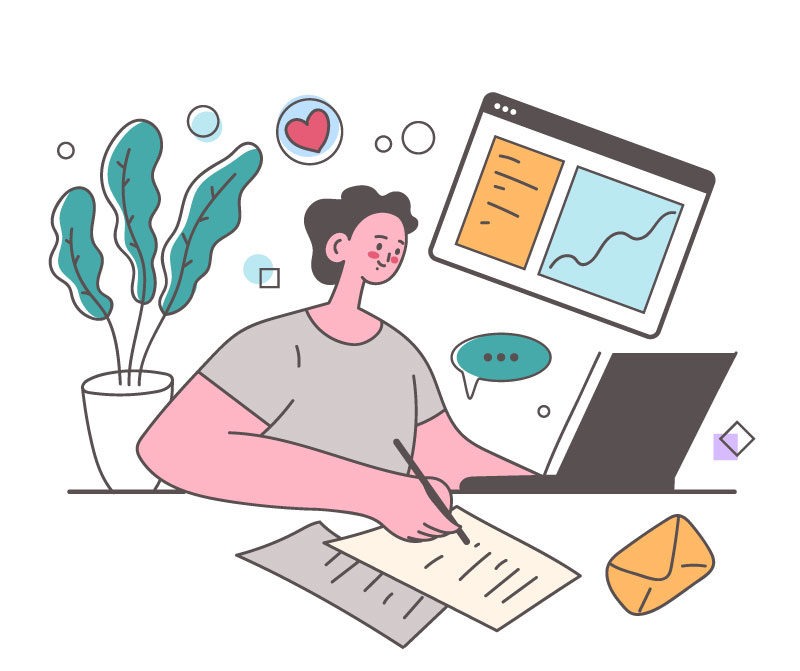
In previous posts, we focused much on the strategy and copy of winning proposals. This article will explore the critical design elements of a design proposal template. The look and feel are vital to a professionally produced, compelling bid or proposal.
10 Most Critical Design Elements of Proposal Templates
Below we’ve provided detailed descriptions, examples and templates for the ten most critical design elements we consider crucial to developing a proposal that catches evaluators’ attention.
1. Overall Document Layout (Header, Footer, Layout, Logos)
A well-designed proposal template is the foundation of the winning proposal. It should be visually striking and polished, effectively conveying your brand. Consider investing in the services of a graphic designer to help devise a proposal design template that communicates professionalism through the layout, careful selection of font, visual imagery and logo use. Their professional design guidance can do wonders to elevate and professionalize your proposal document.
The template will also guide your information hierarchy and content presentation. It can help ensure the effective use of white space, which is key to a better reader experience – use it judiciously to avoid dense, text-heavy blocks of information which can intimidate or overwhelm the reader.
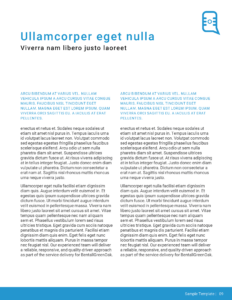
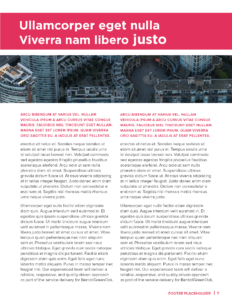
2. Cover Page
An eye-catching, cleanly designed cover page sets the tone for a winning proposal. Please choose an image that speaks to the reader and reflects their company values or the project’s objective. If you do not want an image, include your logo and all critical information:
- RFP name and reference number
- Submission date
- Proposal contact/recipient and other essential document details
Remember, the cover page is your opportunity to make a great first impression with your proposal design template.
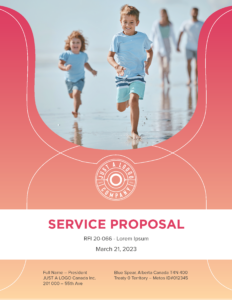
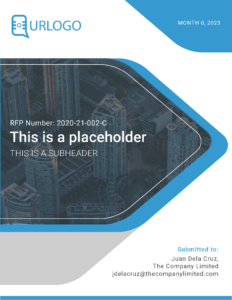
3. Executive Summary
A solid executive summary must provide the reader with the proposal’s critical and most salient points and features. It foreshadows your bid’s key elements and differentiators and compels readers to appreciate or agree with your unique value proposition. A reader should gain a comprehensive snapshot of the proposal without reading it entirely but, hopefully, be enticed to continue for more details.
We recommend structuring your executive summary to align with the evaluation criteria so that your capacity to meet the RFP’s requirements is clear and compelling. To this end, be sure the headings and subheadings of your executive summary accurately reflect the essential parts of the proposal. Alternatively, you might consider using a table format for the proposal template’s executive summary listing the evaluation criteria in one column and a few bullets on how your company meets the requirements in the other.
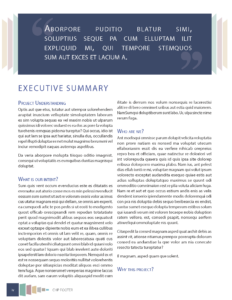
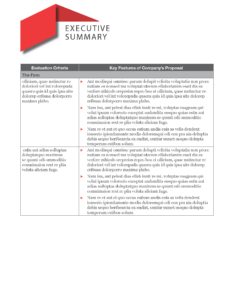
4. Company Profile
In many ways, the unstated objective of asking proponents to provide their company profile is to determine if there is a good fit between them and your organization. It is a critical introduction and helps build a connection with your brand and message.
The company profile should provide all the content requested. Typically, this includes your company’s story, leadership team, main service offerings or product features, vision, mission, values, successes (awards and recognition) and sometimes, financial strength and stability (i.e., financial forecast infographics).
More importantly, the company profile should be tailored and organized to persuade readers that your organizations are suitably aligned or a good ‘fit .’From an evaluator’s perspective, a ‘fit’ may pertain to several things, including values alignment, product or service features, project track record, key personnel, and availability). Many professional services projects last for many months, years and even decades, so evaluators will want to select a company that will be a compatible cultural fit. Ultimately, the evaluators want to know that the past successes you’ve highlighted are “repeatable.” To give the client confidence that you can replicate your project success, include a clear description of your methodology in the company profile to stand head and shoulders above the rest.
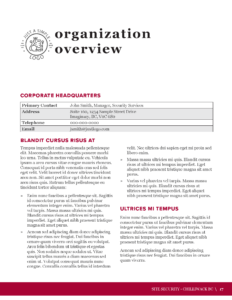
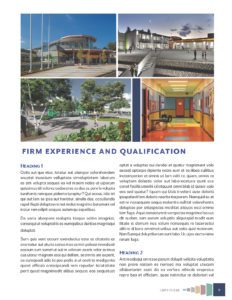
5. Resumes
Most proposals will ask for the resumes of the proposed project and management team. These should follow a consistent design, and the information presented should follow the same order and format for each team member.
For a resume to be effective, it needs to be both a document that looks back and looks forward. Looking back at the historical information, the reader should understand an individual’s formal education, additional training, credentials, and projects they’ve completed.
By looking forward, resumes should help the reader better appreciate how an individual’s accumulated knowledge and experience will be applied to the proposed project and how their knowledge and expertise will improve the chances of project success.
An effective resume should include a personal touch, like a brief profile at the top. It should do more than summarize the resume, highlighting specifically the value the candidate will deliver to the team and the project and why the candidate is looking forward to the project.
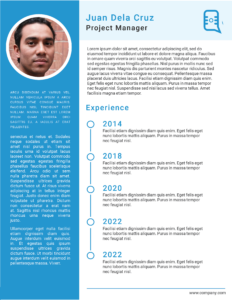
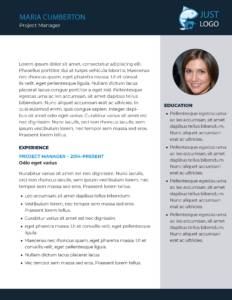
6. Bios
Like resumes, these should follow a consistent format and design. Typically they also include an image of the staff member. The images used for team member bios should be professional and the same size and resolution.
The narrative should summarize their expertise, highlighting their achievements and proposed role on the leadership or project team. The bio should help the reader understand the individual’s unique value to the project and provide a sense of their sensibility and approach to work, emphasizing collaboration, communication, and relevant technical skills.
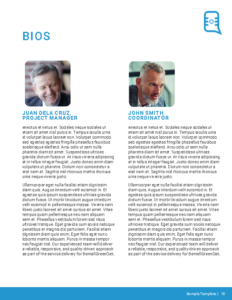
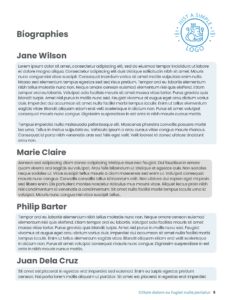
7. Project Profiles
Project profiles or case studies are essential to establishing a company’s credibility and capabilities. They are intended to demonstrate how your firm has successfully delivered solutions, addressed challenges or provided a service that has improved a company or organization. The information for each project profile needs to be well organized and structured logically and consistently, ensuring the layout, information, and level of detail are the same for all profiles.
For example, the quantitative information (project start date, end date, name of client, budget, services provided) should occupy one area of the project profile, with the qualitative information (project description, project challenges and solutions, project outcomes) occupying another area of the project profile.
One of the essential elements of a project profile is the “relevance” section. Ideally, it would be best if you tailored this section to the RFP’s requirements explaining why this project is relevant to the project on which you are bidding.
The connection to the project should be evident to the reader and add weight and credence to your reputation and ability to meet the RFP’s requirements. From the project profiles, the reader should recognize that you are ideally positioned to deliver the project successfully based on similar experiences and lessons learned.
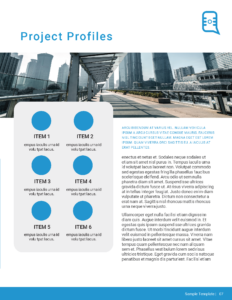

8. Process Graphics
Process graphics are an important way to convey critical information. They could reflect process flow, project plans, critical data, reporting structures etc. They are an effective tool for supporting or emphasizing the points you present in your proposal.
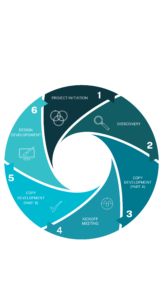
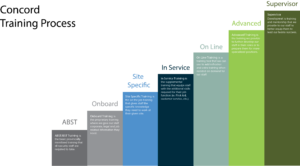
9. Data Elements as Graphics
Data elements in the form of graphics should be developed professionally and incorporated throughout the body of your proposal to break up text and present key data points in a visually compelling manner – like an infographic.
Often, proposal writers place too much emphasis on the written word and not enough on developing powerful graphics that can, in many instances, convey key information and underline important points more effectively.
By cleverly incorporating data elements as graphics, you can set your proposal apart from your competitors and more persuasively tell your story. In addition, incorporating data elements as graphics enhances the reader’s experience providing them with a visual break from dense text and an opportunity to reflect on your messaging.
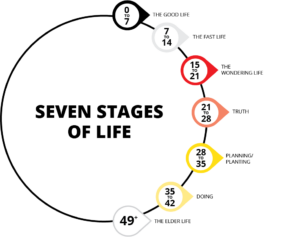
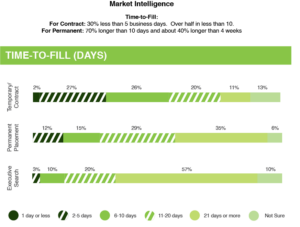
10. Pull Quotes/Testimonials
Pull quotes are powerful, compelling quotes from clients attesting to the quality of your company’s product or services. They can reinforce your storytelling when used judiciously in appropriate document sections. They can work to emphasize key features of your proposal and highlight your company’s value proposition.
Pull quotes can be strategically incorporated within the proposal for a more significant impact In contrast, reference letters or client testimonials are often relegated to an appendix. We recommend selecting one or two of the most powerful sentences from your reference letters or client testimonials and converting them into visually compelling elements. They should be used to reinforce, validate or support your arguments in context. For example, if you describe your project methodology and claim it helps deliver projects on time and budget reliably, place a Pull Quote that reinforces this assertion near this write-up.
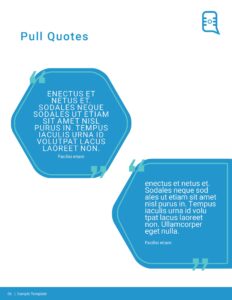
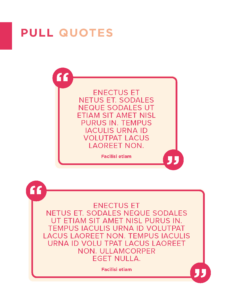
Conclusion – Design Matters
A thoughtfully planned and conceived proposal design template can be the difference between winning or losing a contract. Thus, as mentioned, employing the services of a professional designer to design your proposal template is always a worthy investment. A well-designed document enhances information design and readability, which, in turn, better conveys your company’s suitability and value proposition. It is an essential tool to employ in your bid and proposal efforts to win business.
